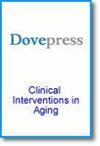Enhancing Emergency Department Pain Management for Older Adults with the Hip Fracture Fast-Track (HFFT) Protocol in a Middle-Income Country
IF 3.7
3区 医学
引用次数: 0
Abstract
Purpose: This study aimed to evaluate the impact of the Hip Fracture Fast-Track (HFFT) protocol, designed specifically for older patients at our hospital, which commenced on January 1, 2022, on the management of emergency department (ED) pain in older adults with hip fractures.Patients and Methods: Retrospective pre- and post-study data from electronic health records (EHR) at our hospital, using the International Classification of Diseases (ICD)-10 codes S72.0, S72.1, S72.8, and S72.9, were utilized. The study included patients aged 65 years or older who presented to the ED with low-energy, non-pathologic isolated hip fractures or proximal femur fractures. The pre-HFFT period included patients from January 1, 2020, to December 31, 2021, and the post-HFFT period included patients from January 1, 2022, to October 31, 2023. Data were compared for the proportion of patients undergoing pain evaluation in the ED, before discharge, time to first analgesia, number of patients receiving pain relief in the ED, and the use of fascia iliaca compartment blocks (FICBs) and pericapsular nerve group blocks (PENGBs).
Results: The final analysis involved 258 patients, with 116 in the pre-protocol group and 142 in the post-protocol group. The rate of analgesic use increased significantly in the post-HFFT group (78 [67.24%] vs 111 [78.17%], P = 0.049). The rate of pain score screening at triage increased from 51.72% before the HFFT protocol to 86.62% post-HFFT protocol (p < 0.001). Compared with the pre-HFFT protocol, the post-HFFT protocol exhibited a higher rate of FICB (0% vs 14.08%, p < 0.001) and PENGB (0% vs 5.63%, p = 0.009) administration.
Conclusion: The HFFT protocol’s implementation was associated with improved ED pain evaluation and analgesic administration in older adults with hip fractures. These findings indicate that tailored protocols, such as the HFFT, hold promise for enhancing emergency care for this vulnerable population.
Keywords: older adult, hip fracture fast-track protocol, middle-income country
中等收入国家利用髋部骨折快速通道 (HFFT) 方案加强急诊科对老年人的疼痛管理
目的:本研究旨在评估我院于2022年1月1日开始实施的专为老年患者设计的髋部骨折快速通道(HFFT)方案对老年髋部骨折患者急诊科(ED)疼痛管理的影响:利用本院电子健康记录(EHR)中的研究前后回顾性数据,使用国际疾病分类(ICD)-10 编码 S72.0、S72.1、S72.8 和 S72.9。研究对象包括 65 岁或以上、因低能量、非病理性孤立性髋部骨折或股骨近端骨折而就诊于急诊室的患者。HFFT前包括2020年1月1日至2021年12月31日期间的患者,HFFT后包括2022年1月1日至2023年10月31日期间的患者。比较了在急诊室接受疼痛评估的患者比例、出院前患者比例、首次镇痛时间、在急诊室获得镇痛的患者人数、筋膜髂室阻滞(FICB)和包膜神经组阻滞(PENGB)的使用情况等数据:最终分析涉及 258 名患者,其中协议前组 116 人,协议后组 142 人。HFFT术后组的镇痛剂使用率明显增加(78 [67.24%] vs 111 [78.17%],P = 0.049)。分诊时疼痛评分筛查率从 HFFT 方案前的 51.72% 增加到 HFFT 方案后的 86.62%(P < 0.001)。与 HFFT 方案实施前相比,HFFT 方案实施后的 FICB(0% vs 14.08%,p < 0.001)和 PENGB(0% vs 5.63%,p = 0.009)使用率更高:结论:HFFT方案的实施有助于改善髋部骨折老年人的急诊室疼痛评估和镇痛用药。这些研究结果表明,髋部骨折快速治疗方案等量身定制的方案有望加强对这一弱势群体的急诊护理。
本文章由计算机程序翻译,如有差异,请以英文原文为准。
求助全文
约1分钟内获得全文
求助全文
来源期刊

Clinical Interventions in Aging
GERIATRICS & GERONTOLOGY-
CiteScore
6.20
自引率
2.80%
发文量
193
期刊介绍:
Clinical Interventions in Aging, is an online, peer reviewed, open access journal focusing on concise rapid reporting of original research and reviews in aging. Special attention will be given to papers reporting on actual or potential clinical applications leading to improved prevention or treatment of disease or a greater understanding of pathological processes that result from maladaptive changes in the body associated with aging. This journal is directed at a wide array of scientists, engineers, pharmacists, pharmacologists and clinical specialists wishing to maintain an up to date knowledge of this exciting and emerging field.
 求助内容:
求助内容: 应助结果提醒方式:
应助结果提醒方式:


